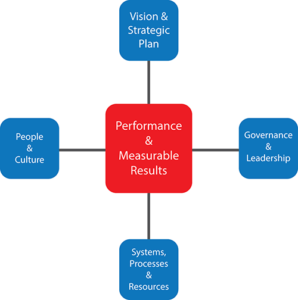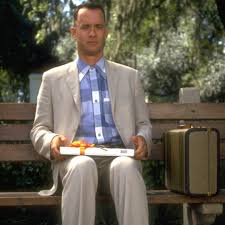
Positively Building Your Business
July 11, 2019
Knowledge is Power
August 11, 2019Strategy Drives Structure
I am surprised that senior managers continue to design an organisation chart around individuals, creating roles for certain people.
This is fraught with potential inefficiencies. You really have to design the organisational structure to deliver on the organisation’s Purpose, Vision and Strategic Goals – not around individuals.
You wouldn’t try to build a house without first drawing up plans. Without a plan, a vision for how it will look, you won’t know a lot of the important information, you wouldn’t know:
- What type of bricks should you use, how many do you need?
- What type of doors & windows, exactly what they need to do, how do they open and close?
- The walls, how many, what job do they have, do they have to be supporting or just dividing?
You draw up plans for how to design your house before you start to build it, so why would you build your business without the plans in place first?
Ronald McDonald Nailed It
To further demonstrate the point, look at a business which we all know, although not necessarily all love … McDonalds.
When Ron Kroc took the business over from Richard and Maurice McDonald, the goal of the business was about selling more burgers, providing better service and more efficient processes, using the “Speedee Service System”. The structure and skills required were staff to serve customers and cook burger, staff management, good purchasing and process improvement.
It soon became apparent to Ron Kroc that by selling more burgers in each outlet, you can only increase your income by a limited amount, however good the processes.
So, he changed strategy as he went about growing the business. He standardised menus and processes, sold franchises, selling only single franchises to keep control and consistency; he rolled out thousands of franchises.
Ronald McDonald wasn’t in the burger selling business, but in the business of acquiring property and selling franchises. The structure and skills needed were driven by the strategy of rapid franchise roll-out, not selling more burgers.
You may not love Macca’s food, but you can’t deny that they nailed their business growth strategy!
Strategy is to Structure what Gin is to Tonic!
The concept that Structure follows Strategy was first proposed by Alfred Chandler in 1962.
Stanley Kavale, in 2012, published a study on structure and strategy, he wanted to identify the connection between structure and strategy, their relationship and their influence on organisational performance. He identified five different cases which further support Chandler’s 1962 proposition that ‘’Structure Follows Strategy’’ and his paper concludes that structure and strategy are closely related and, more importantly, that structure follows strategy.
I strongly recommend that management should be involved from the beginning of strategy development, through to implementation and aligning the structure to deliver on the strategy. With a good match and connection between structure and strategy, the result is high performance, a mismatch leads to under performance.
Clearly both strategy and structure do need regular robust review. Harry Mintzberg (a Canadian academic and author on business and management) suggests it is reciprocal – “Structure follows Strategy as the left foot follows the right”. This makes sense in today’s volatile and uncertain world, there clearly is a need to constantly re-assess both Strategy and Structure, but Structure does need to be driven by Strategy.
Planning YOUR Strategy and Structure
As I say, Strategy and Structure go together like Gin & Tonic! By “Structure” I mean both organisational structure, as well as all the other key parts of a bigger puzzle. They must all fit together to get your business firing on all cylinders to achieve your growth plans.
Most businesses or teams don’t have in place the 4 key success factors for continuing growth. These have to be built, measured and maintained. It’s a big task and most leaders simply don’t have the capacity to do this on their own.

-
Vision and Strategic Plan
Many businesses or divisions don’t have a well-articulated vision or plan, with clear goals and milestones. This results in a lack of direction in decision making and failure to effectively drive and manage performance.
-
People and Culture
It’s never been more important to attract and retain the best people in your business to perform consistently well. The people and skills to lead the second growth phase are very different than those required in a start-up. Many leaders struggle with the transition of bringing in fresh talent whilst also honouring (and retaining) loyal employees.
-
Governance and Leadership
In early growth, leaders can successfully grow the business through hands-on management, often micro-management. As a business scales, this style no longer works. The optimum level of management and right style of leadership must be used to lead growth and manage risks.
-
Systems and Processes
The systems, tools and processes are rightly nimble and cost-effective for growth when starting out. Scaling up demands a different level of rigour and sophistication as systems and software across the business become increasingly vital to compete profitably and avoid costly errors.
Jayne Blake’s proven and simple 5-Step Process is like a “Health Check” for your business. It gives you the tools to deliver high performance and avoid the stress of leading a business that is struggling to achieve your goals.
Take our FREE Business Health Check & get our FREE download to build your Strategy and Structure for growth, with our “2020-Ready Growth Program”
Or just Contact Jayne at JBC here to find out more




